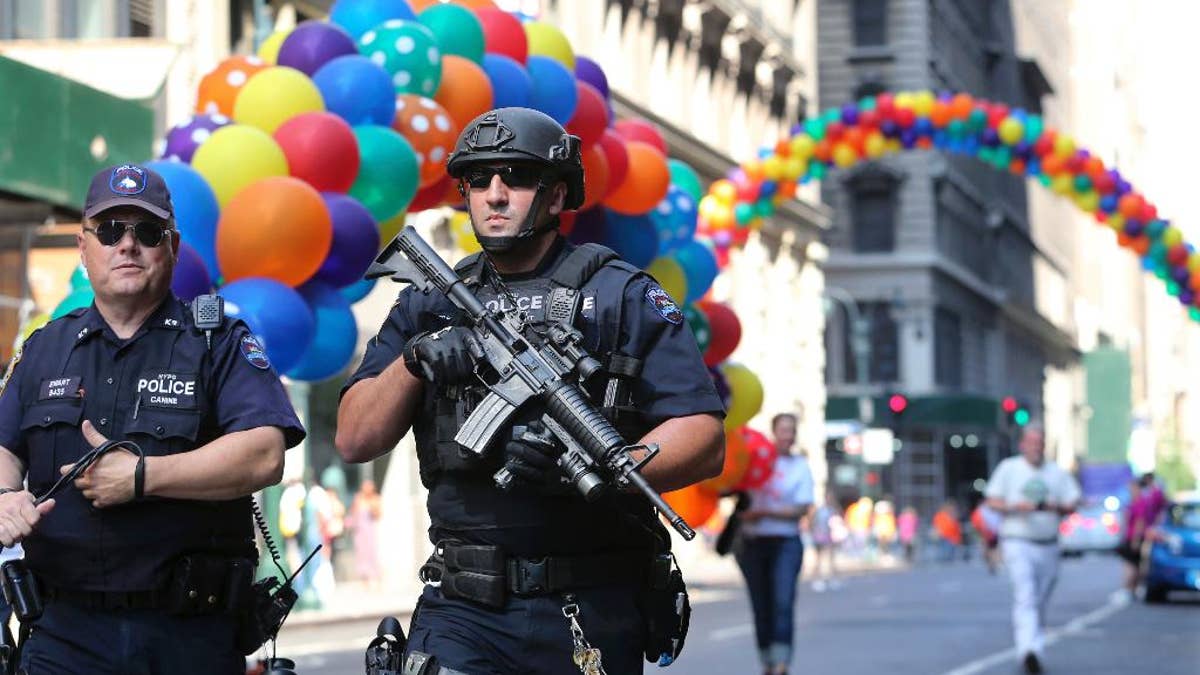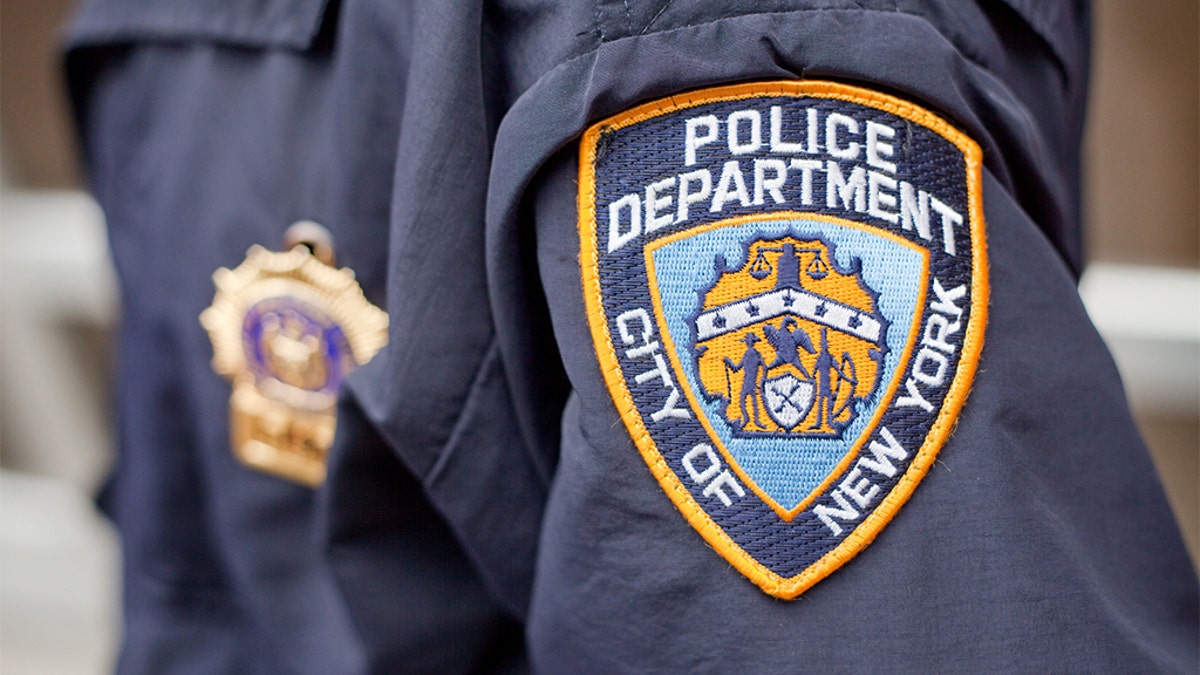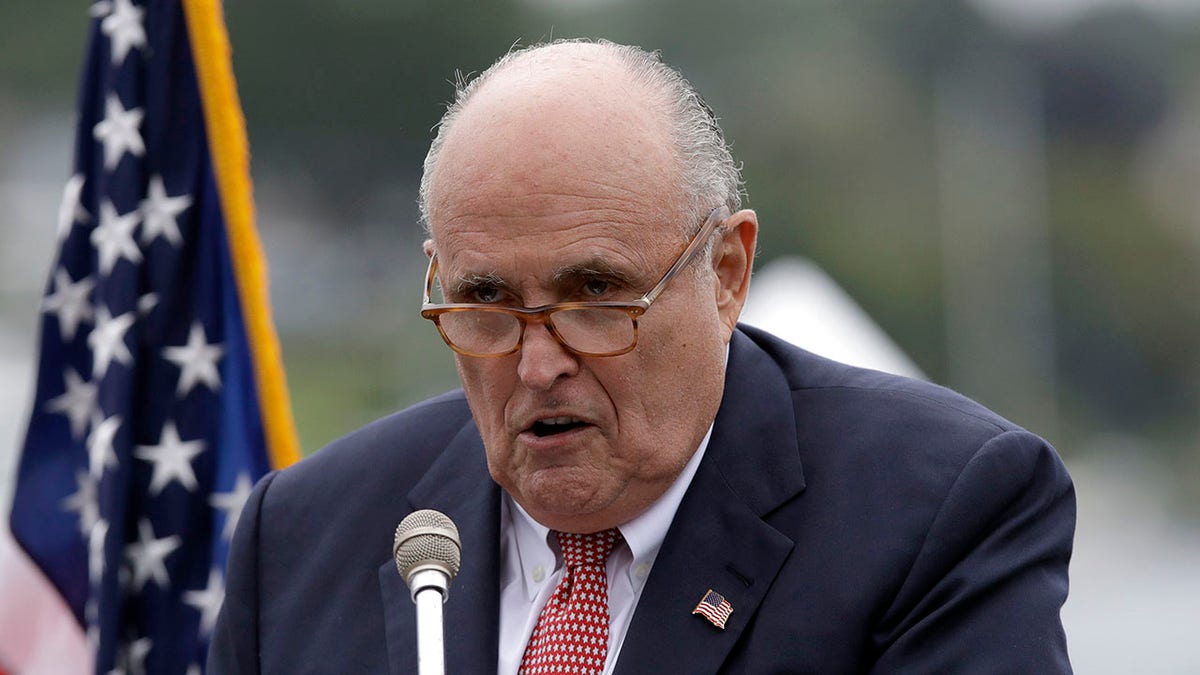Two New York City officers shot in Bronx during 24-hour span
NYPD Sergeant, Founder of Blue Lives Matter NYC Joseph Imperatrice is on the scene of where the gunman opened fire inside the 41st Precinct in the Bronx.
The sense of security that for years has become synonymous with New York City has been marred by a rise in violent crime in recent months, prompting concern that the hard-earned gains slowly are being reversed.
A disturbed gunman ambushed a pair of police officers in the Bronx over the weekend, according to police, and one officer was shot in the chin. Hours later, police said the same man opened fire at a Bronx New York City Police precinct, striking one officer in the arm. The attacks have been defined as "assassination" attempts.
"I came from the generation of cops that took the city back. Crime was out of control. People forget how bad it was," retired NYPD Bronx detective, Malcolm Reiman, who served for 31 years starting in the early 1980s, told Fox News. "Those who do not learn from history are doomed to repeat it."

Retired NYPD Bronx detective, Malcolm Reiman, in 1984. (Courtesy of Malcolm Reiman)
So far in 2020, the city has already had nearly 30 percent more shootings compared to the same period in 2019, according to NYPD officials, with about 80 victims compared to 56 last year.
When reached for comment, an NYPD spokesperson pointed to a recent press conference that detailed the overall crime spike this year, up 16.9 percent compared to January of last year.
Data also shows that incidences of seven major crimes rose, including robbery, felony assault, burglary, grand larceny, and grand larceny of a vehicle. Only murder and rape reported dips.
For the first time in years, in 2019 New York City saw a rise in crime. Official statistics show more than 300 people were murdered, an increase of almost 8 percent compared to 2018, marking the highest numbers in three years.
The disturbing thought that New York could be on the edge of a crime epidemic has been fueled by a string of highly publicized and grisly killings — including the December stabbing death of Barnard college student Tessa Majors.
Between 2018 and 2019, robberies and shootings rose around 3 percent while major crimes jumped 1.4 percent. The number of rapes was the only category of the seven that dropped, falling about 2.5 percent from 1,805 to 1,760 between 2018 and 2019. Yet the NYPD has acknowledged that many such cases continue to occur without being reported.
Hate crimes also rose from 356 in 2018 to 428 in 2019.
New York City Police Commissioner, Dermot F. Shea, at the time, called the rise "a concern." However, the NYPD trumpeted that the number of criminal incidences had fallen to about 95,000 — meaning more than 800 fewer victims than a year earlier. That statistic does not account for the type or severity of the crime committed, however.

Police officers walk along the street near the parade route of the New York City Pride Parade on Sunday, June 26, 2016, in New York City. (AP Photo/Mel Evans) (The Associated Press)
So what is behind the bump in violent crime?
Police officials have pointed to gang activity and the illicit drug industry as a key contributor to increasing homicides and shootings. Experts and analysts also are questioning the newly enacted bail reform legislation, pushed through by Democrats last spring.
At a press conference last month, Shea echoed that such laws – which no longer give a judge discretion to hold violent and repeat offenders in custody and sharply lower cash bail for nonviolent defendants – are primarily to blame.
New York also has in place new discovery laws, which mandate that prosecutors submit all evidence and witness/victim contact information within just 15 days of an arrest.
Earlier this month, New York's largest police union, the Police Benevolent Association – alarmed by spiking crime numbers – asserted a "public safety emergency." In a statement, President Patrick Lynch encouraged New Yorkers to "reject Mayor (Bill) de Blasio's easy excuses."
"Bail reform is not the only problem here. The double-digit increases in shootings, robberies, burglary and thefts aren't the product of any single law or policy," he said. "They are all the result of failed leadership and a political culture that denigrates and devalues the work police officers do."
President Trump also has publicly blamed de Blasio and New York Gov. Andrew Cuomo, citing their "weak leadership."
Yet not everyone sees bail laws as the main contributor to New York's crime levels.
"It is difficult to directly draw a comparison between the bail legislation and what is perceived as rising crime in New York — it seems that the conversation is shifting to the 'anecdote' style of advocacy, which can ultimately hurt positive reforms," noted Jesse Kelley, the government affairs manager for nonprofit public policy center, R Street Institute.
Ashley Nellis, senior research analyst at the Sentencing Project, pointed out that the bail reform law only has been in effect for one month and thus "it is just too soon to tell."
"The majority will not be found guilty of a crime," she explained. "The impact of this incarceration and the collateral consequences that accompany incarceration are much more dangerous to public safety than the bail reform law."

New York City police officers work the scene of a police involved shooting outside the 41st precinct Sunday, Feb. 9, 2020, in New York. (AP Photo/John Minchillo)
In response to a Fox News request for comment about the targeted officer shootings in the Bronx, a spokesperson for the mayor, Freddi Goldstein, said Monday that the mayor's office doesn't "want to politicize an attempt to kill our men and women." The Union condemnation was vehemently rejected by de Blasio's office.
However, there is more pending legislation that has critics on edge — and some criminal justice reform advocates hopeful.
State SB S2144 is an "act to amend the executive law, in relation to parole eligibility for certain inmates aged 55 or older." Essentially, the law would make those older than 55, who had served at least 15 years behind bars, eligible for parole no matter the crime, subject to a review board.
"The number of older inmates in our prison system is rising every year even as the total inmate population is falling," the bill introduced by NY Democratic Sen. Brad Hoylman states. "The population of state prisoners over the age of 50 has increased by 81 percent since 2000. Crimes are largely committed by young people. Older inmates who have served long sentences present the lowest risk of recidivism of any other class of inmates."
It does not mandate release but allows for the case to be reviewed. The legislation has passed the Assembly and is awaiting the governor's approval.
Under the tenure of Mayor Michael Bloomberg beginning in 2002, the "stop-and-frisk" policy was implemented, enabling the NYPD to stop and question anyone in public and subsequently check them for weapons or illegal substances. However, the majority targeted were black or Hispanic, and in many cases, posed no reasonable suspicion of crimes.
"There had been some abuse with the stop-and-frisk method," acknowledged Erik Pistek, a former NYPD detective who worked under [former Police Commissioner William] Bratton before retiring in 2000. "[But] since the curtailment of [this], in addition to bail reform, in my opinion, crime is spiking, and the figures are reflecting that. The curtailment of the question-and-frisk is handcuffing the cops. Politicians give the appearance that they care more about criminals than the cops," Pistek said.

The crest on the jacket of a New York City Police Officer while on patrol.
One long-term retired NYPD official, who requested anonymity given the sensitivity of the subject, said that the problem was a push to fulfill "quotas," which resulted in inexperienced police targeting individuals to meet certain requirements.
De Blasio, who replaced Bloomberg in 2014, pledged to reform the controversial policy.
New York City once held the not-so-coveted hallmark as one of the world's most violent and crime-beleaguered cities. The narrative surrounding who and what "saved" New York City from being one of the world's most dangerous cities remains legendary.
Throughout the 1980s and into the early 90s, New York City was defined as a type of hell on earth – homicides, mugging, carjackings, break-ins and drug deals – all routine to daily life.
Several retired NYPD officers interviewed by Fox News cited the city's mammoth crack epidemic, which peaked around 1995, as a major culprit.
"The NYPD was setting up Special Anti-Crack Units, which became Tactical Narcotics Teams," Pistek continued. "We cleaned up Times Square from the sex shops and theaters, and police started targeting quality-of-life type crimes such as prostitution. The Lower East Side of Manhattan had a targeted operation known as Operation Pressure Point, which was a war on drugs at the street level."
Crime rates dropped dramatically during the latter part of the 1990s, with violent crime descending over 56 percent and property crimes dipping about 65 percent. Many credit the dive to then-Mayor Rudolph Giuliani – who became mayor in 1994 – with zero tolerance, get-tough policies.
PAKISTAN WORKS TO CLEAN UP KARACHI, ONCE WORLD'S ' MOST DANGEROUS CITY'
Moreover, the size of the NYPD increased by about 35 percent during the 1990s. Many analysts also point to Boston cop William Bratton's appointment to run New York's transit police in 1990, then to lead the NYPD from 1994 to 1996 as the catalyst for the city's substantial decline in crime.
"You would walk down the subway steps every day, and all you could smell was urine; it was littered with muggers and mentally-ill people everywhere," Reiman said. "Subways were truly terrifying places."
"Those protesting today," Reiman stressed, referring to ongoing protests pushing for free service, "don't know what it was like for everyone back then."

In 2018, Rudy Giuliani, personal attorney for President Donald Trump, speaks in Portsmouth, N.H. (AP Photo/Charles Krupa, File)
In addition to cleaning up transit, Bratton put in place "Broken Windows," which involved sharp clampdowns on even minor infringements such as graffiti and subway fare violations. "Broken Windows" was built on the theory that low-level offenses foster a climate that, if unchecked, paves the way to more severe problems.
Giuliani furthermore ordered a crackdown on organized crime, setting sights on known perpetrators such as the Gambino family. Bratton returned under de Blasio in 2014, and kept a tight grip on low crime numbers, before stepping down two years later.
"Back then, we were able to do our jobs unhindered. Cops earned respect on the streets, and the bad guys knew that we were not afraid to do our jobs, and crime began dropping to record lows as a result," noted retired NYPD crime scene investigator, Joe Thompson. "There is no question that crime is rising and will continue to rise."
But Commissioner Shea remains optimistic.
"I'm so positive because I know the work of the men and women of this department and what they are capable of," he added at the press conference earlier this month. "Challenges are not something new."


